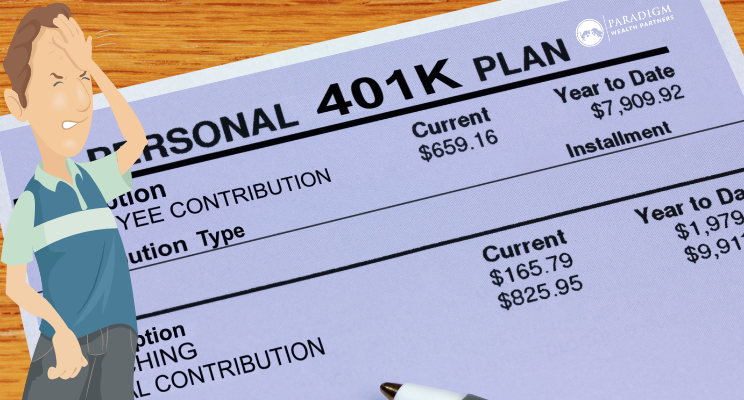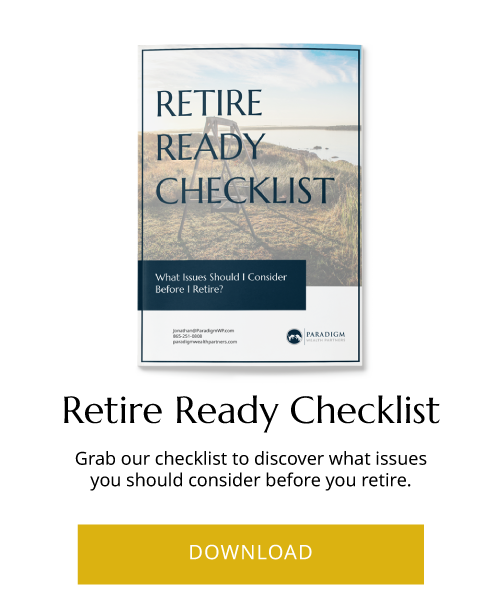Common 401(k) Matching Mistake
For many of us, our 401k account is our first foray into investing. It is also many people’s primary retirement account. We are told repeatedly how important it is to max out these accounts. But could we be missing out on free money? We could be if we are making this common 401k matching mistake.
401k & Policy Refresher
A 401k is a retirement investing plan offered by many employers. This is an ideal investment vehicle because the funds are deducted from your paycheck before they hit your account. You cannot spend what you do not have- therefore these contributions are a method of forced savings.
Employees usually have a choice between different investment options, typically mutual funds. 401k accounts provide tax benefits. The money contributed is pre-tax, you will not pay taxes on it until you withdraw it after age 59 ½. The contributions are not considered income and they can put you in a lower tax bracket. Additionally, the money in the account grows tax deferred. In a regular investment account, the net gains and dividends would be taxed. However, the money in a 401k grows tax-free (if it is invested). This enhances the power of compounding.
The maximum contribution for 2020 is $19,500. For people over the age of 50, an additional $6,500 is allowed. Some employers offer a 401k match. The matching funds do not count towards the maximum contribution limit. If you max out the $19,500, your employer can still contribute. There is a limit on total contributions however (from you and your employer). This total limit is $57,000 for those under 50 and $63,500 for those over 50. Furthermore, contributions cannot exceed 100% of your salary.
Partial Match
This means that your employer has offered to match a portion of money that you contribute to your 401k (up to a certain amount). A typical scenario would be a 50% match of what you contribute- up to 6% of your salary.
Imagine that your salary is $80,000. Your contributions would be eligible a 6% match of your salary ($4,800). Your employer offers 50% matching, so they will make half of your $4,800 contribution, which would be $2,400. If you contribute 8% of your salary, your employer will match just 6%.
100% Match
A 100% match means your employer contributes the same amount of money that you do (up to a maximum amount). If you contribute 4%, they contribute 4%, if you contribute 3%, they contribute 3%. But if you contribute 6% and your employer’s matching limit is 4%, they will only contribute 4%.
In the case, the best course of action appears to be contributing enough to get the maximum amount. While this could be true, it is not that simple.
Missing Out on the Match
If you are not strategic with your 401k contributions, you could be making a big 401k matching mistake.
There are two things you must consider concerning matches. The first is how your employer contributes, via a lump sum, or with each paycheck. Second, you must ponder when you’re maxing out your required 401k contribution during the year.
If you get your matching funds in a lump sum, obviously you will receive it all at once. You get all that you can get at once. When you reach your own required contribution for the year, it does not matter. But if your situation is different and your employer divides the matching funds between each paycheck, you could be missing out if you are making a common 401k mistake.
If you do not max out your 401k required contribution before the end of the year, this does not apply. You are essentially contributing from each paycheck, and so is your employer because you have not reached the limit.
If your employer makes their contribution every paycheck and you max out your minimum contribution before the end of the year, you will not be entitled to matching funds once you reach that plateau. Matching only happens when you are contributing. So, if you race to max out as early in the year as possible, you are missing out!
You can find out how your employer contributes by reading the summary plan description, a document that employers must provide to employees who are participating in a 401k plan.
What’s the Damage?
Let’s use this scenario:
- $100,000 Salary
- 6% Employee Contribution
- 3% Employer Match
- 24 Pay Periods in a calendar year, employer matches each period
The employer is going to spread their $3,000 contribution between the 24 pay periods, $125 per pay period. If you front-load your $6,000 in January, you will only be eligible to receive 1 of the 24 matches (just $125). This means you leave $2,875 on the table.
Instead, you want to spread your $6,000 contribution across each of the 24 pay periods. This means contributing $250 per pay period and getting the $125 with each match.
This is a common 401k matching mistake. If you are making it, do not panic. It is easy to fix. Most employers allow you to make 401k contribution changes at any time of the year. While you are at it, review the language of your 401k each year. Subtle changes in policy and the language can greatly impact your finances. If you have any questions or need help translating your 401k plan, reach out to a CERTIFIED FINANCIAL PLANNER™ Professional.
Want to read more about our financial opinions? Check out our blog here!
____________________
Content in this material is for general information only and not intended to provide specific advice or recommendations for any individual. No strategy assures success or protects against loss. Investing involves risk including loss of principal.



